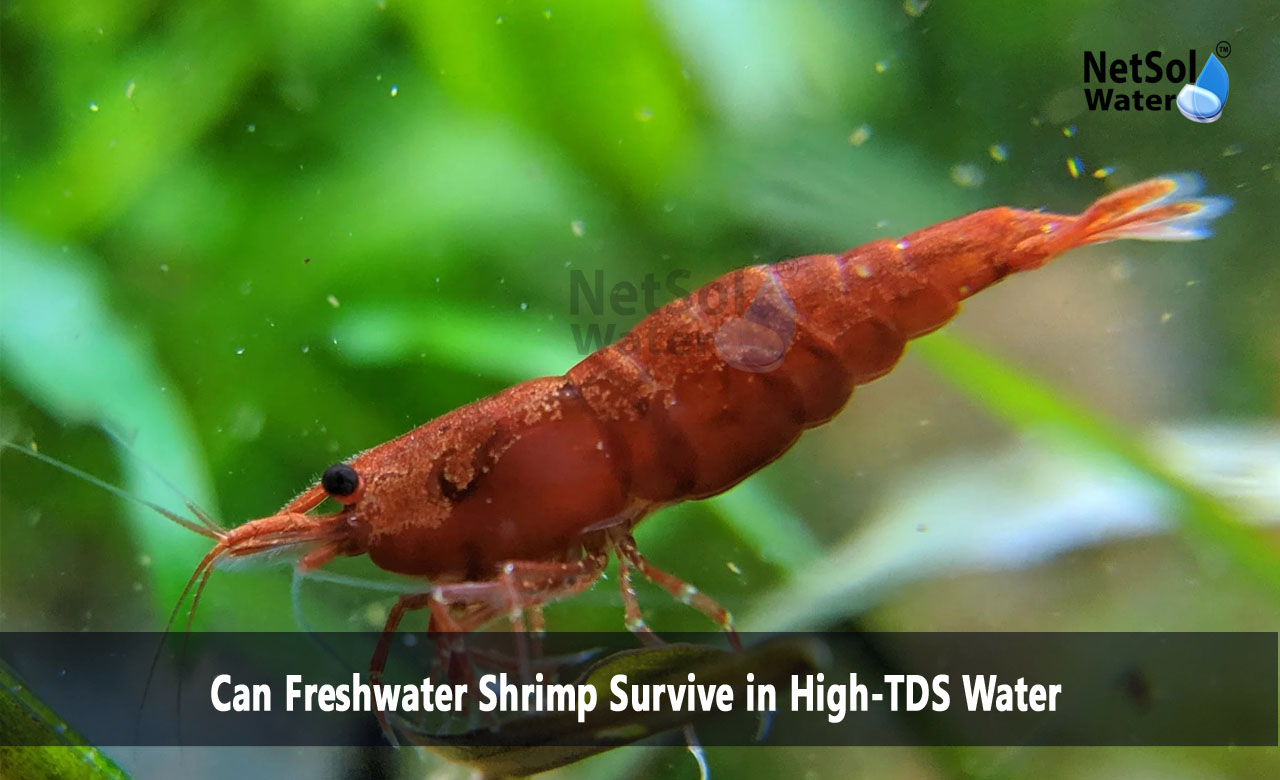Can Freshwater Shrimp Survive in High-TDS Water?
Total dissolved solids or TDS describe the mix of salts, minerals and organic compounds that water carries. Changes in TDS change the osmotic pressure around shrimp and that makes them work harder to stay healthy. Some shrimp species tolerate higher TDS while others need soft water to grow and to breed. People use TDS as a quick screen to see if water may stress animals. The reading does not name specific chemicals but it points to the need for more tests and for careful management. Here we explain what TDS means, where it comes from how high TDS affects shrimp body function how reproduction may change and what actions people can take to protect shrimp and to keep systems stable.
What is TDS and why it matter?
TDS gives a single number for all dissolved material in water. Field meters read conductivity and then estimate the TDS level in parts per million. Lab work can break the total into salts and other dissolved compounds.
Key components in freshwater
Salts such as sodium potassium, calcium and magnesium form a large share of TDS. Nitrates phosphates and dissolved organics also add to the total and change how the water behaves for shrimp.
Why shrimp care about TDS?
Shrimp exchange salts and water across gills and body surface to keep internal balance. When the surrounding water shows high TDS shrimp must shift their physiology to cope. That change uses energy and changes growth and survival.
Common sources of TDS
Natural sources
Weathering of rock and soil releases minerals into groundwater and rivers. Evaporation concentrates salts in closed systems and raises the TDS number over time.
Agricultural and urban inputs
Runoff from fields and from fertilized lawns carries dissolved nutrients into streams and ponds. Road salt and urban runoff also add dissolved ions that change TDS.
Point sources and sea influence
Some discharges from industry or from wastewater change local TDS. In coastal areas tidal flow and brackish water can raise the baseline for inland systems after storms.
Can freshwater shrimp survive in high-TDS water?
Species tolerance
Different shrimp show wide tolerance ranges. Some species that hobbyists keep show resilience and can live in mid to high TDS for long periods. Other species require soft, low TDS water to thrive and to reproduce.
Short term survival versus long term health
Shrimp may survive a short rise in TDS but they may suffer slow growth or poor molting if levels stay high. Long term exposure can reduce life span and lower resistance to disease.
Signs that TDS harms shrimp
Watch for slow feeding, poor molting,colour loss and higher death rates. These signs point to stress that stems from osmotic pressure and from induced changes in water chemistry.
Effects on physiology
Osmotic balance and energy demand
Shrimp move salts and water to keep cells stable. High TDS makes freshwater shrimp pump more and that costs energy. Less energy remains for growth and repair.
Molting and growth problems
Molting depends on good internal balance. If shrimp fail to molt properly, they show deformed shells slow growth or death. High TDS can interfere with the ion balance needed for successful molting.
Immune response and disease risk
Stress from a wrong TDS level weakens defences. Pathogens and parasites take advantage of stressed shrimp and that raises mortality in stocked systems.
Effects on reproduction
Gamete quality and spawning
High TDS can alter egg and sperm quality. Adults may spawn less often and eggs may fail to develop in water that changes osmotic conditions.
Larval development and survival
Young shrimp and larvae face the hardest challenge. They need stable water chemistry to feed and to grow. High TDS can lower larval survival and that reduces recruitment in ponds and wild populations.
Population level consequences
Repeated high TDS events lead to population declines. Systems may shift to species that tolerate higher salts leaving sensitive species behind.
Testing monitoring and mitigation
Use a calibrated meter and test at several depths and sites. Send samples to a lab to learn which ions form the total and to guide the right fix.
Ways to lower TDS?
Reverse osmosis and ion exchange remove dissolved solids for tanks and hatcheries. For ponds work on source control and on water exchange that dilutes the dissolved load slowly.
Management and prevention
Improve runoff control and reduce fertilizer and sewage inputs into water. Add gradual changes to tank water to let shrimp adapt while you monitor behaviour and survival.
Conclusion
Shrimp survival in high-TDS water depends on species life stage and on the specific chemical mix that makes the TDS value. The number can warn people that a system faces stress and that shrimp may suffer in growth, molting immunity and breeding. Test TDS often link readings to lab analysis and watch animal behaviour for early signs of harm. If you see high TDS or if shrimp show stress collect water samples and seek expert help for a clear plan. Contact us for more information or request a consultation to protect your shrimp and to improve water quality. High-TDS water needs careful monitoring and steady management.
Contact Netsol Water at:
Phone: +91-9650608473, Email: enquiry@netsolwater.com



